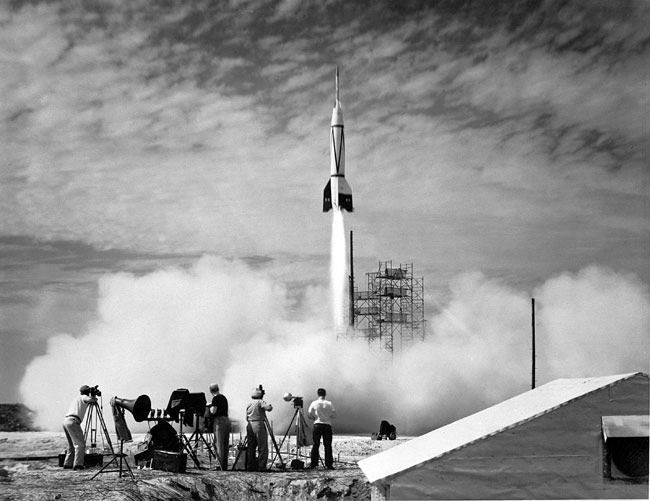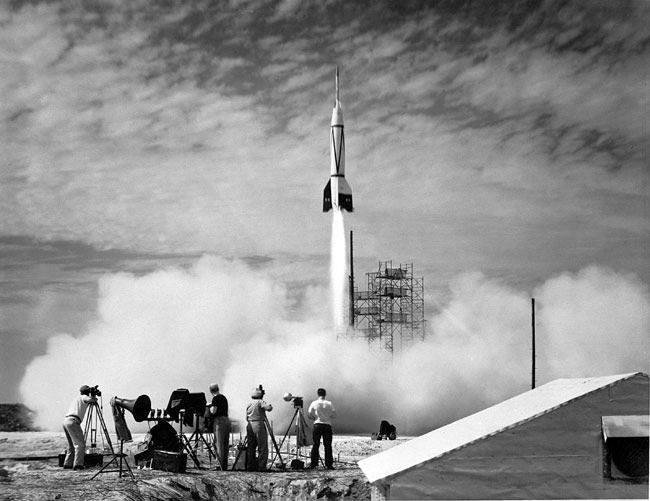
On Sept. 6, 1947, a rocket launched from an aircraft carrier for the first time. The V-2 rocket was captured from a German manufacturing site by the Allied forces at the end of World War Two.
V-2s were the world’s first long-range guided ballistic missile. Wernher von Braun, a famous aerospace engineer, invented them for Nazi Germany before he was secretly moved to the U.S. and started working for NASA. Von Braun and the seized V-2 missile parts were brought to the White Sands Missile Range in New Mexico, where NASA assembled the parts and started experimenting with launches.
The first V-2 to launch at sea blasted off from a U.S. Naval ship called the USS Midway in a mission titled “Operation Sandy.” The aircraft carrier sailed a few hundred miles south of Bermuda for the launch. After liftoff, the V-2 started tilting midair and only made it to an altitude of 15,000 feet (4,600 meters) before falling back to Earth.
On This Day in Space Archive!
[embedded content]
Still not enough space? Don’t forget to check out our Space Image of the Day, and on the weekends our Best Space Photos and Top Space News Stories of the week.
Follow us @Spacedotcom and on Facebook.



